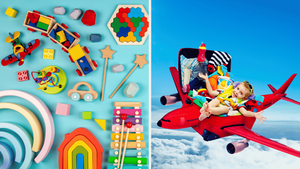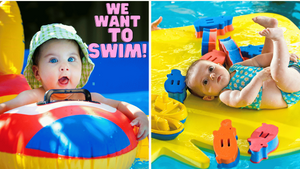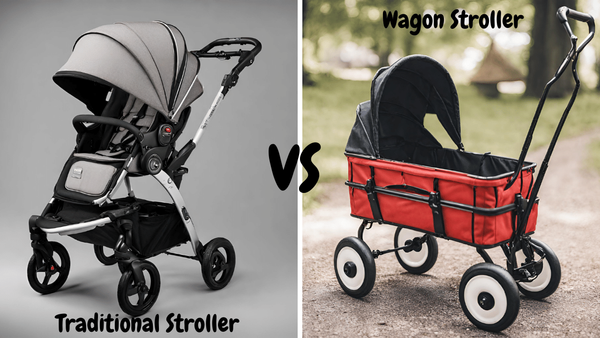As parents, we all want to give our children a head start in life. One of the best ways to do this is through reading – not only does it help boost their language and literacy skills, but it’s also beneficial for their social and emotional development as well. And when it comes to babies and infants, board books can be especially effective.
From classic nursery rhymes to vibrant illustrations that draw attention and encourage exploration, board books are an ideal way into introducing guided playtime with your little one from a young age.
Reading to infants is a magical experience. It not only creates a special bond between parents and their little ones, but it also sets the foundation for a lifetime love of learning. The positive impact of reading on infant development cannot be overstated. In this article, we will explore the difference between traditional books and board books, and why the latter holds incredible advantages for our youngest readers.
In this blog post, I’ll be exploring why these types of books are so important for infants while providing some helpful tips on what type of book you should look for depending on your baby's age group. So let’s get started.

The Importance of Reading to Infants
Before we delve into the world of board books, let's first understand why reading to infants is so crucial. Research has shown that reading aloud stimulates brain development and enhances language skills in infants. It introduces them to new words, sounds, and concepts, fostering cognitive and socio-emotional growth. Moreover, reading together creates a nurturing environment that helps babies feel loved and secure.
Introducing Books to Infants
The board books of today come in all shapes and sizes, but the common denominator between them is that they’re especially designed to be durable – an important factor for babies who love to put their hands on everything. Typically made from thick cardboard or plastic and with rounded corners, these books are perfect for young children as they provide tactile experiences while also being safe if dropped or chewed on.
In terms of introducing books to infants, it’s important to start early and introduce simple board books that feature recognizable images – for example, animals from the farm or pictures of everyday objects such as a spoon or cup. As your baby grows older, you can then opt for more complex stories with vibrant illustrations and text that will help improve their language and literacy skills.

Benefits of Reading to Infants
Reading to your infant has numerous benefits, from improving language and literacy skills to boosting their social-emotional development. For example, when reading stories together you can create a dialogue between yourself and your baby – this will help them understand the importance of relationships while also teaching them how to communicate effectively.
In addition, these books often feature bright colors which can spark your little one's interest and enhance their ability to recognize images and shapes.
Another benefit is that these books help promote cognitive development as they provide an opportunity for parents and caregivers to interact with their little ones while teaching them about different emotions, ideas, and concepts.
Plus, reading to infants also helps form a strong bond between parent and child. Research has shown that reading to babies from an early age can lead to increased self-esteem and better communication skills further down the line.

Types of Books for Infants and Toddlers
Board Books: A Gateway to Early Literacy: Board books are specially designed for infants and toddlers, with pages made from thick, durable cardboard. These sturdy books can withstand the sometimes less-than-gentle handling of young children, making them ideal for little hands to explore independently.
What Sets Board Books Apart:
• Sensory Experience: Board books often incorporate interactive elements, such as touch-and-feel textures, lift-the-flap surprises, or sound buttons. These features engage multiple senses, making reading a multi-dimensional experience for infants.
• Visual Appeal: With vibrant colors, simple illustrations, and large, easy-to recognize images, board books captivate young imaginations. The visual stimulation helps develop their visual perception and supports early literacy.
• Safety: Unlike traditional books with delicate pages that can be torn or chewed on, board books are built to withstand teething and rough handling. Parents can relax knowing that these books are safe for their little explorers.
• Durability: Board books have a remarkable ability to withstand countless readings, spills, and even tantrums. They are built to last, providing years of enjoyment for growing children.
• Introduction to Concepts: Board books often focus on introducing basic concepts like shapes, colors, numbers, animals, and more. By engaging with these books, infants begin to develop early cognitive abilities and build a foundation for further learning.
Interesting Facts:
- Did you know that board books were first introduced in the 1940s as a response to the demand for durable and child-friendly books?
- Board books are known to enhance fine motor skills as infants learn to turn pages independently.
- According to a study published in Pediatrics, reading to infants can boost their vocabulary by as much as 40%!
Picture Books
These types of books are perfect for older infants and toddlers who are able to recognize objects and colors more easily. Many of these books come with vivid illustrations that will help stimulate your little one’s imagination, while the text can teach them basic words and concepts.
Interactive Books
These types of books often feature tabs, flaps or pull-out pages that allow children to explore the story more deeply. From sliding pieces to turning wheels, these books are perfect for keeping your little one engaged and entertained while also helping them develop their fine motor skills.
Themed Books
These types of books are focused on a certain topic such as farm animals or colors – the illustrations and text help children understand and learn about these topics while also boosting their language and literacy skills.
Recommended Book Titles for 0-12 Months Old
For Babies Aged 0-6 Months:
- Pat The Bunny by Dorothy Kunhardt
- Little Peek A Boo by Roger Priddy
- Dear Zoo by Rod Campbell
- Goodnight Moon by Margaret Wise Brown
For Babies Aged 6-12 Months:
- I Kissed the Baby! By Mary Murphy
- Brown Bear, Brown Bear What Do You See? By Bill Martin Jr. and Eric Carle
- Ten Little Fingers and Ten Little Toes by Mem Fox
- Maisy Goes to Preschool by Lucy Cousins
Recommended Book Titles for 1-3 Years Old
For Toddlers Aged 1-2 Years:
- Chicka Chicka Boom Boom by Bill Martin Jr. and John Archambault
- The Very Hungry Caterpillar by Eric Carle
- Where the Wild Things Are by Maurice Sendak
- ABCs Animals by Richard Scarry
For Toddlers Aged 2-3 Years:
- The Story of Ferdinand by Munro Leaf
- Goodnight Moon 123s by Margaret Wise Brown and Clement Hurd
- The Cat in the Hat by Dr. Seuss
- We’re Going on a Bear Hunt by Michael Rosen

Tips for Engaging Infants and Toddlers with Books
The most important tip for reading to your baby or toddler is to make sure you have fun. Reading together should feel like a fun game – take the time to point out different objects in the book and ask them questions as this will help keep them engaged while also boosting their language skills.
You can also use props such as stuffed animals or puppets that reflect characters in the story. This will help bring the book to life and make it easier for your little one to understand the story.
And lastly, don’t forget to end each session with a hug or cuddle – this is important as it helps create a strong emotional bond between you and your baby while also reinforcing positive behavior and emotions.
Book and Book Boards for Infants FAQs
Should I read to my baby every day?
Yes! Reading to your baby on a daily basis will help promote language and literacy skills as well as social-emotional development. Not only that, but it’s also a great way to bond with your little one. Aim for 15 minutes of reading time per day if possible.
Which books are best for infants?
Board books and picture books are both great options for babies aged 0-12 months. Board books are typically made from thick cardboard or plastic with rounded corners, while picture books feature vibrant illustrations and simple text that will help improve your baby’s language and literacy skills.
What type of book should I get for my toddler?
Interactive books are the perfect choice for toddlers aged 1-3. These types of books often feature tabs, flaps or pull-out pages that allow children to explore the story more deeply while also developing their fine motor skills. Themed books can also be a great way to introduce your toddler to different topics such as animals and colors.
Final Thoughts
As evidenced, books play a significant role in the development of infants. In the formative stages of life, investing in board books and read-aloud stories can serve as the jumpstart to building early literacy and language abilities.
From exploring other cultures and customs to learning simple concepts such as shapes, colors, and numbers, these age-appropriate texts offer enthralling discovery opportunities for babies of all ages.
In the journey of early literacy, books play a vital role in nurturing a love for reading from the very beginning. Their sturdy construction, vibrant illustrations, and interactive features make them an excellent choice for infants. Remember, it's never too early to start reading to your little one. So grab a book and embark on a magical adventure together, fostering a lifelong love for language and learning.
*Sources:
- American Academy of Pediatrics. (2014). Literacy Promotion: An Essential Component of Primary Care Pediatric Practice. Pediatrics, 134(2), 404–409.
- DeBaryshe, B. D. (1993). Joint picture-book reading correlates of early oral language skill. Journal of Child Language, 20(2), 455-461.*









